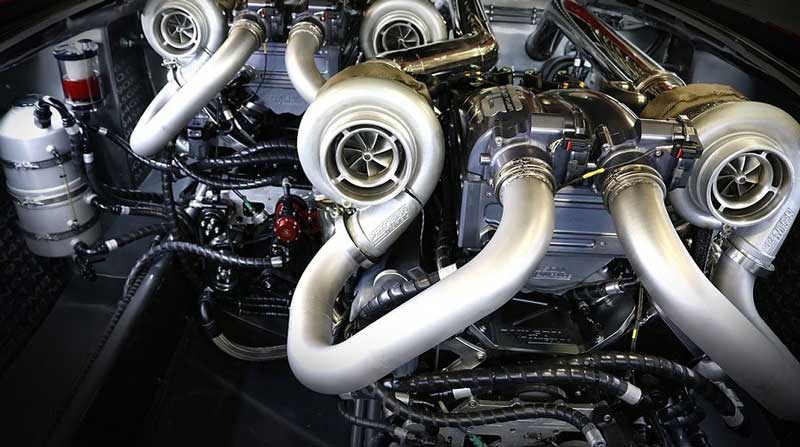
Turbine and engine cooling after a dynamic ride - is it necessary?
Content
Take care of the turbine, and it will thank you for longer work without problems. But where are the limits? And how exactly to cool the turbine?
In the past, having a turbocharger under the hood was a great excuse to put some proud "Turbo" badges on the car and add sporty accessories like spoilers and big wheels. However, today this is the norm and it is actually more difficult to buy a car with a naturally aspirated engine than with a supercharged one.
We can say that this complicates operation and introduces a component that is quite expensive to repair, but on the other hand, thanks to supercharging, we have more powerful engines that effectively drive cars from low revs. The comfort of using such an engine is much higher, at least in everyday cars.
Whether we like it or not, the turbocharger is worth taking care of. If you don't know how to do this or want to remember, keep reading.
Turbine operating conditions
Why is the turbine of particular concern? Because it works in extremely difficult conditions. It is powered by engine exhaust gases, which accelerate the rotor inside the housing to 200 rpm. at a temperature of several hundred degrees Celsius.
Such temperatures and speeds require proper cooling and lubrication, which is the responsibility of engine oil. If we turn off a very hot engine, then we will cut off the lubricant supply to the turbine, and more precisely to its plain bearings and thrust bearings, which are still running idle.
Effect? The temperature rises sharply, the oil chars, clogs the oil channels and seizes the bearings.
In some cars, especially sports cars, protection against such a sudden shutdown of a hot engine is applied and after turning it off, the lubrication system continues to work. However, most vehicles may not have such a system.
How to cool the engine?
The turbine should be cooled, especially after intensive driving. That is, after a sporty ride or a long drive at high speed, such as on a freeway.
After stopping, it is best to wait at least 90 seconds while the engine is idling, so that the turbine rotor has time to slow down and the working oil lowers the temperature of the compressor. If we were driving short but intensively, for example, dynamically in the city, the cooling time can be reduced to 30 seconds.
The simplest and most natural rule is to park, unfasten your seat belts, take everything you need and turn off the engine only at the last step. However, it's hard to imagine that when you go to fill up on the highway, you can stand at the gas station for 90 seconds - this can seem like an eternity if there is a line behind you.
The cooling time of the turbine at standstill can be significantly reduced.if 1-2 km before the scheduled stop, we reduce the speed to a speed at which the engine will operate at low load and at low speeds.
Engine care on the track
An extreme case of intensive driving is, of course, driving on a track. It's best to split sessions into 15 minutes with the road cars you want to use to get back home on wheels. drive and 15 min. rest.
When scheduling your time on the track, it's a good idea to set aside time for a cooling lap where you'll already be keeping the engine rpm low. After we have stopped and circled to cool down, the engine should run for at least another 2 minutes. On exceptionally warm days, this period should be extended considerably.
However, I will mention an anecdote from Porsche training on the Silesian circuit. I drove a 911 GT3 in a group that also included 911 GT3 RS, GT2 RS and Turbo S. It was the highest level of Porsche Driving Experience available in Poland at the time, so the pace was high and cars were hit. hard. After the session ended and I drove a test lap at a distance of more than 3 km, I heard on the radio: “Stop. We're leaving turbocharged cars and turning off naturally aspirated GT3s and GT3 RSs straight away." There were mechanics who serviced these cars regularly, each costing over a million, so I think they knew what they were doing.
Exaggeration or necessity?
It is worth being guided by common sense and if you are going to the store for 5 km, cooling the turbine will not hurt, but this is more of a prevention. However, if we don't develop this habit on longer journeys and more severe handling of the car, we run the risk of wasting ourselves.
Assuming that the turbine is designed to operate for a time equivalent to 300 100 km, turning off the engine without regard to temperature can reduce this resource to 2,5 3,5. km. A turbine in popular engines costs about 335-2 thousand. zlotys, and for example in a BMW 6i and a 7-liter Volvo - even 1-2 thousand. zloty. Regeneration usually costs thousands. zloty.
It is also worth remembering that although the manufacturer may suggest an oil change interval of 20 or 30 thousand. km, then if we want the car and turbocharger to serve us as long as possible, it is worth reducing this interval to no more than 15 thousand. km.
